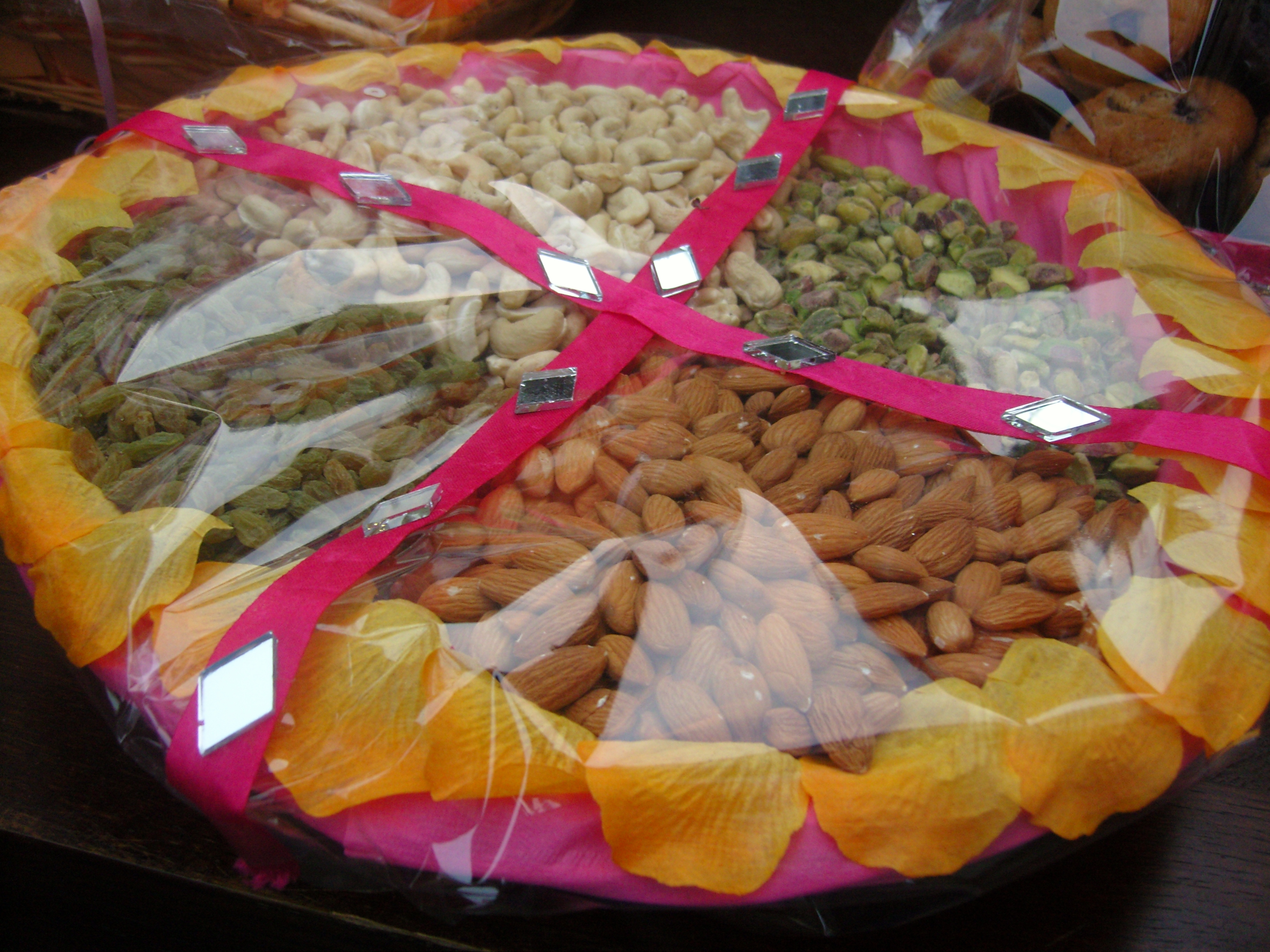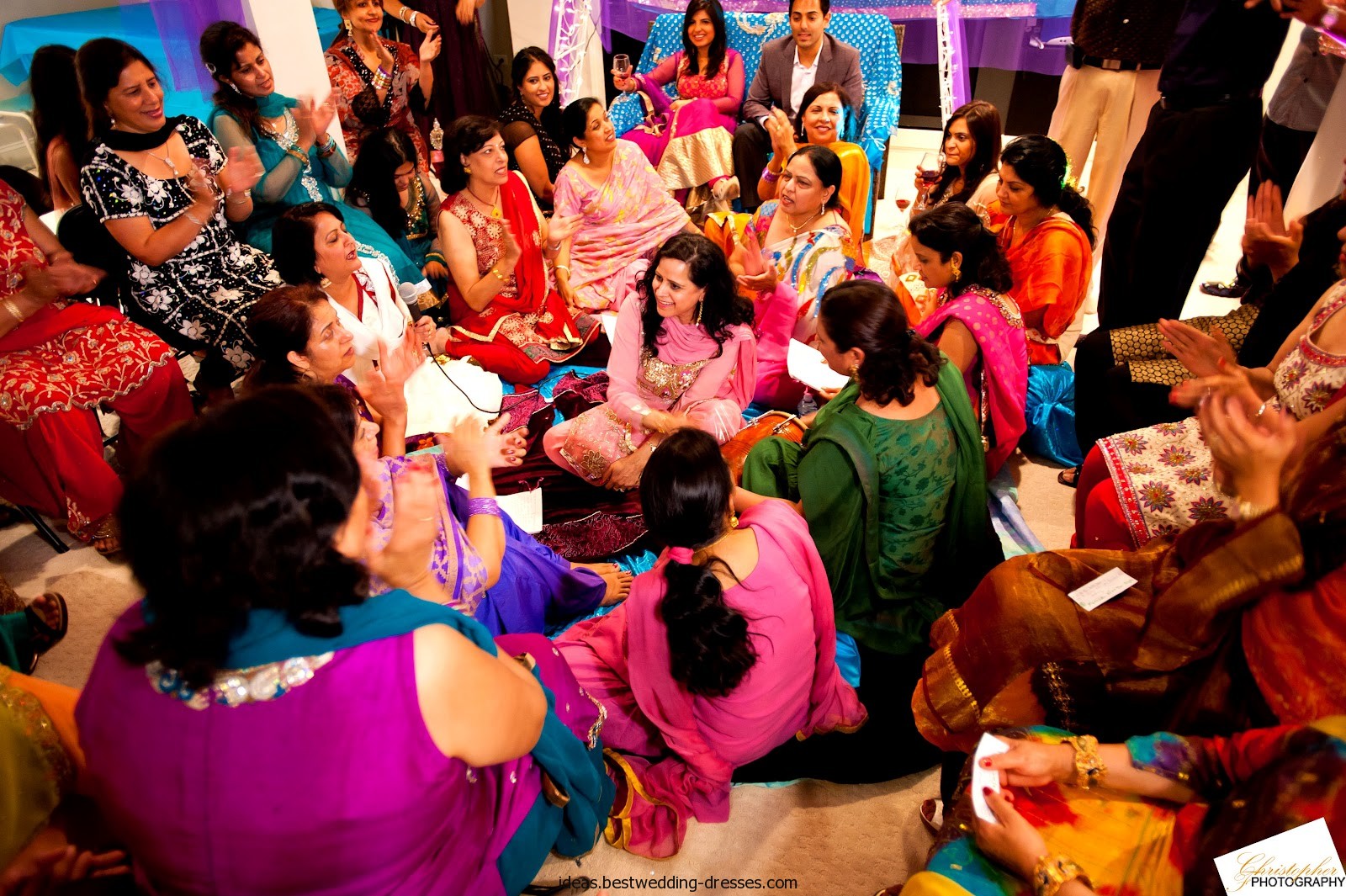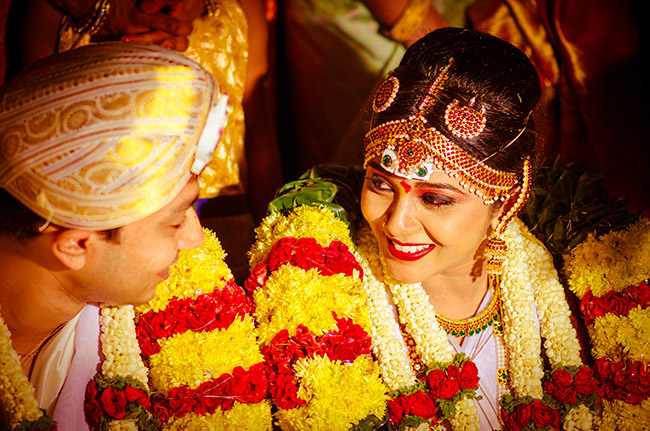Traditional rituals and customs passed on from generation to generation lend colour, gaiety and fun to the marriage ceremony.We explore and bring to you the auspicious rituals of North Indian marriages.
Marriage is one of the most important ceremonies in any culture or religion. It unites not just two individuals but also two families, and in the global village,cross-cultural marriages have united people across territorial borders as well.
The grandeur, pomp and show associated with North Indian marriages are known worldwide. We present a panoramic description of several rituals that make the celebration a lifelong memorable event.
- Sagai (Ring Ceremony)

Simply known as engagement, the Sagai or Ring Ceremony is a promise to wed and happens months or weeks ahead of the actual wedding. It marks the beginning of formalisation of the relationship.The ceremony also marks the coming together of two families. Before the engagement ceremony, it is usually the bride and the groom’s immediate family (parents and siblings) meeting with each other. The Sagaidraws in the extended family (including uncles, aunts and cousins) from both sides. The main event in the ceremony is the exchange of rings between the bride-to-be and the groom-to-be. Gifts are given from both sides. Song-and-dance items performed by the family members add a dash of colour to the occasion.
- Shagunor TilakCeremony

The engagement or Sagai is followed by Shagunceremony. The mother of the groom pays a visit to the bride’s home and offersclothes, jewellery, sweets, etc. to the bride and her family. When the bride’s family makes a visit to the groom’s home to offer gifts, sweets, etc, it is referred to as Tilakceremony. In both events, there are a lot of energetic preparations, gift wrapping, planning, etc., which draw great participation from the family members, especially the younger generation.
- Mehndi

No North Indian marriage can be complete without this ritual. Mehndi is derived from Sanskrit word “mendhika” and it’s a body art using crushed henna leaves that has remained in practice since the Indus Valley Civilisation (3300–1300 BCE). The friends and family of the bride play a big role in this ceremony. They apply mehndi or henna on the palms, forearms and feet of the bride in an entertaining environment. Ladies of the family too decorate their hands and feet with mehndi. It is an auspicious ritual and leads to much camaraderie, laughter and enjoyment.
- Sangeet

Sangeet is held a day earlier, the evening before the wedding. The function is observed separately at the houses of the bride and groom and is marked by the singing of traditional songs by female members including relatives and neighbours.
The environment becomes jovial with members teasing the bride, the groom and even their parents with their songs. With traditional songs blended with tunesfrom popular film songs and latest albums, entertainment reaches its pinnacle. Family members practice for weeks to prepare for their performances.
- Haldi

Haldi is a significant ritual – where a raw turmeric stick is tied to the wrist of the bride and groom and a paste of it is applied to their bodies. This ritual is observed either on the same day of the Sangeet or a day before it – separately at the bride’s and the groom’s houses. As more and more relatives pour in, the celebration becomes vibrant, joyous and entertaining.
Ever wondered why haldi is applied and not something else? Well, the credit goes to thenatural skin care properties of haldithat bring about a radiant glow to the face and the skin.
- Wedding Ceremony Rituals

Eventually comes the big day. The auspicious celebration involves a lot of rituals from the arrival of the baarat to the bidaai(departure of baarat along with the bride). The wedding ceremony also includes several traditional rituals such asdwaarpujan, kanyadaan, paanigrahan and saptapadi(saatphere or seven steps), to name a few.
Dwaarpujan is a formal welcome offered to the members of the groom’s party (baarati) upon their arrival at the bride’s home or wedding venue.
Kanyadaan,which literally means giving away the girl in marriage to the groom, is performed by the father or the parents of the bride.
During Paanigrahan, the groom holds the hand of the bride and pledges to fulfil his responsibilities of taking care of her needs and wishes.
Saptapadiis the signature ritual of the North Indian marriage, where both partners take seven rounds around the sacred fire. After the seventh step or round, the bride and the groom formally become husband and wife.
India is a country of huge cultural and ethnic diversity and thus marriage customs, rituals and traditions differ much between regions and cultures. In this post, we have explored the typical customs followed in North Indian marriages. Watch this space for more posts on various other regional cultures and traditions of this beautiful country.






















